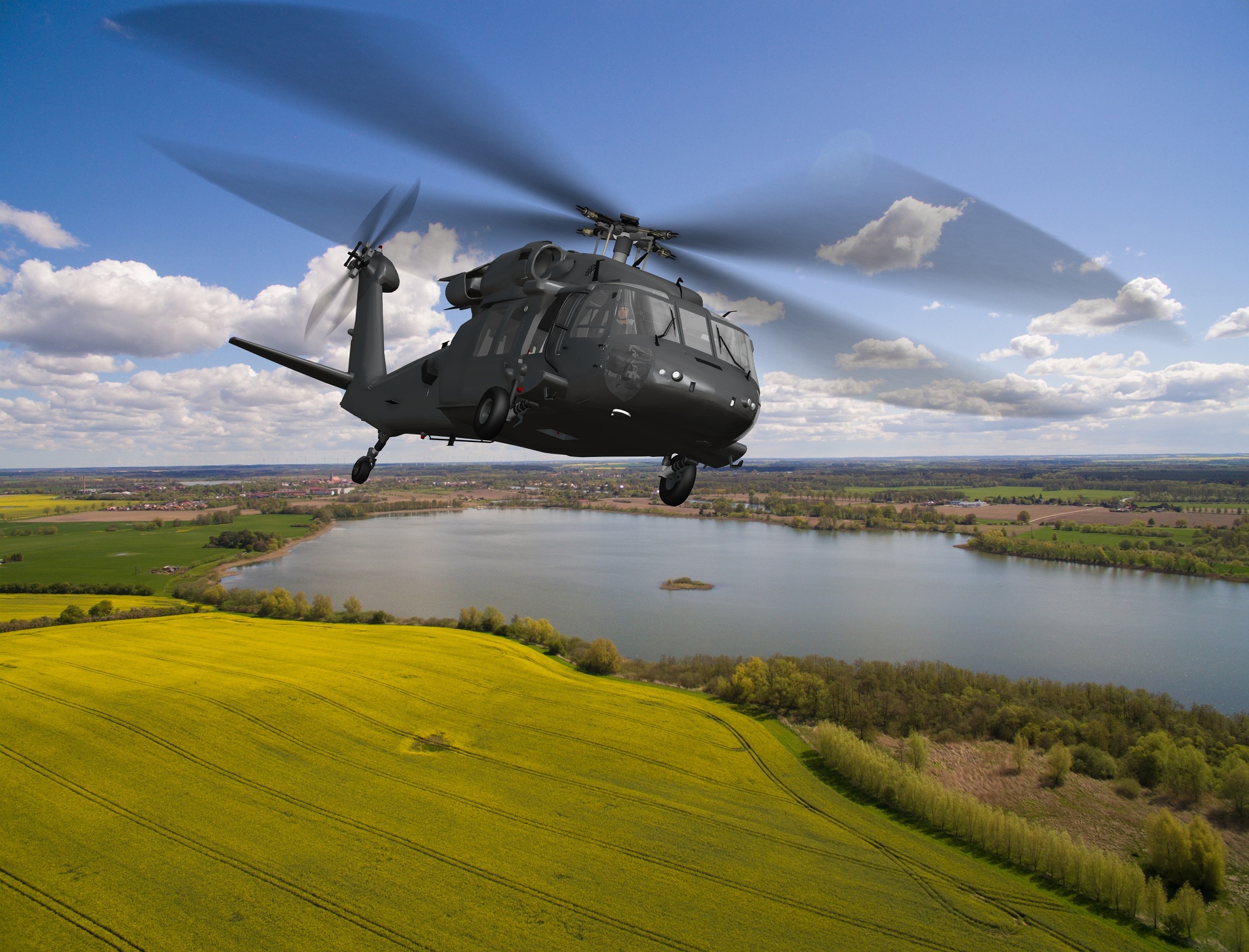From its origins in the late 1960’s, to the raid on Osama Bin Laden, the Sikorsky Black Hawk helicopter has earned its reputation as a touchstone of American military might.
The Black Hawk’s prominence in popular culture only comes as a result of its capabilities: it is one of the fastest, most powerful, most reliable and versatile vehicles operating in the skies today.
But how does this marvel of engineering actually work?
Let’s take a look at how the parts come together to create such a commanding piece of technology.
The Four Main Blades
At the heart of the Black Hawk helicopter are the twin General Electric T700 turboshaft engines. These 4,000 horsepower dynamos turn the drive shaft which connects to the rotor head.
The four massive rotor blades are tilted at an angle so that when they are rotated at a high enough speed, lift can be achieved.
The main rotor is fully articulated and has a diameter of 53 feet and 8 inches. For a visual comparison, school buses in the US are not allowed to be any longer than 45 feet.
The blades are composed of lightweight Nomex honeycomb material in addition to titanium strips that run the length of the blades.
The four main rotor blades come equipped with nitrogen-filled sensors that can detect if the blades develop any cracks. This is crucial, as cracked blades can lead to highly dangerous situations.
The lift that’s generated by the main rotor blades is powerful enough to lift the helicopter, a crew of up to 11 people, and as much as 9,000 pounds of additional weight.
The Tail
The canted tail of the Black Hawk functions in tandem with the main rotors, providing additional lift for the vehicle. Horizontal and vertical stabilizers work together to keep the helicopter steady.
The tail has a rotor diameter of 11 feet, with a 20-degree tilt from vertical, and is supported by a rigid crossbeam. An intermediate gearbox is required to operate the tail rotors, because of their location.
Like the main rotors, the tail rotors also have a strong titanium core.
Sikorsky created an extremely complex machine, not only with the pilot and crew in mind but also the mechanics who would be keeping the helicopter functioning at its best. A hidden ladder built into the tail makes servicing the vehicle in the field much safer and more efficient.
Other Facts and Figures
- Black Hawks can travel at a speed greater than 150 knots or 173 miles per hour.
- They use an average of 900 pounds or 133 gallons of jet fuel an hour.
- They come equipped with military antennas and highly advanced radar which is built into the special operations nose.
- Black Hawks weigh an average of 2,200 pounds, depending on the model.
- Glass panel displays give pilots spectacular control over the aircraft, and some newer models like the HH-60M even include autopilot features like the ability to hover in place.
- The helicopters are named after Black Hawk, a warrior, and leader of the Sauk Tribe of the Midwest who was the first Native American to publish an autobiography in the US.
In Need of Black Hawk Parts?
It’s no mystery why the Black Hawk helicopter has earned its place in our military’s ranks and our country’s history.
If you are the owner of one of these powerful pieces of machinery, and you are in need of replacement parts, don’t hesitate to contact us with any questions, or to request a quote.

